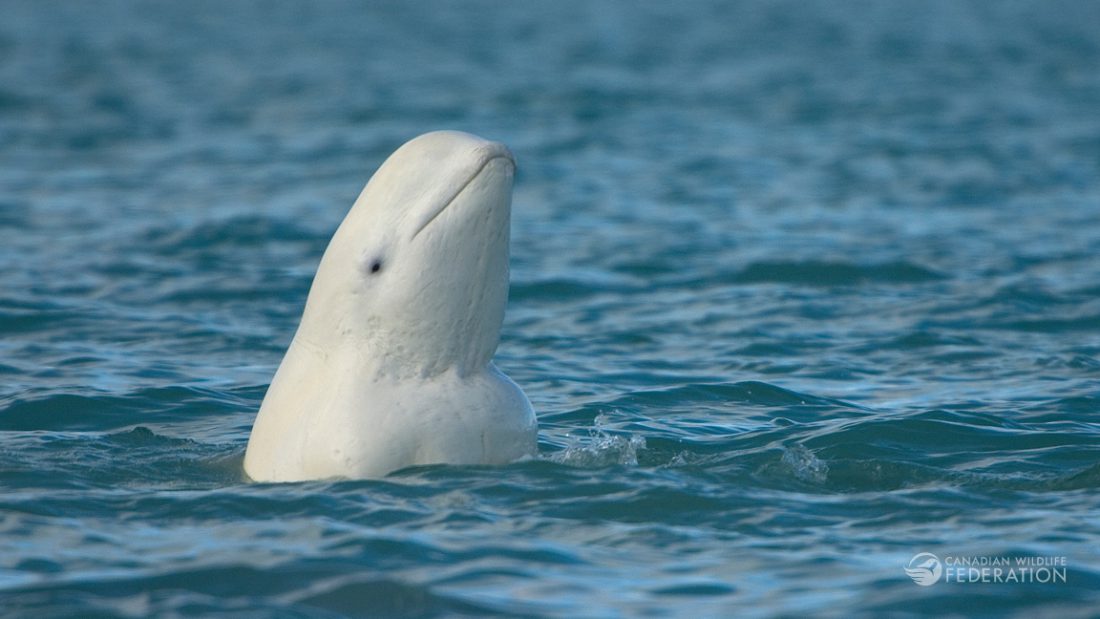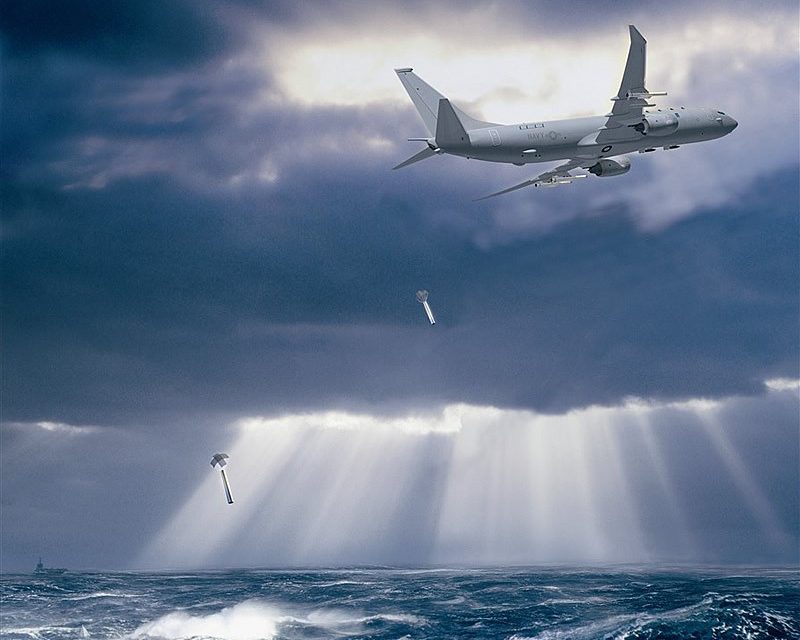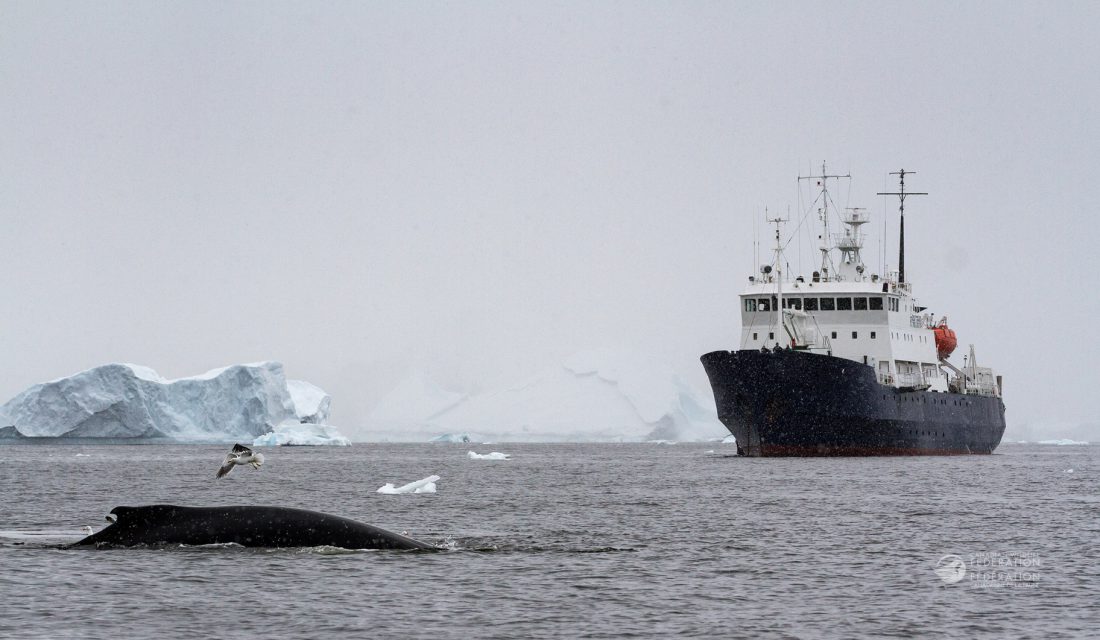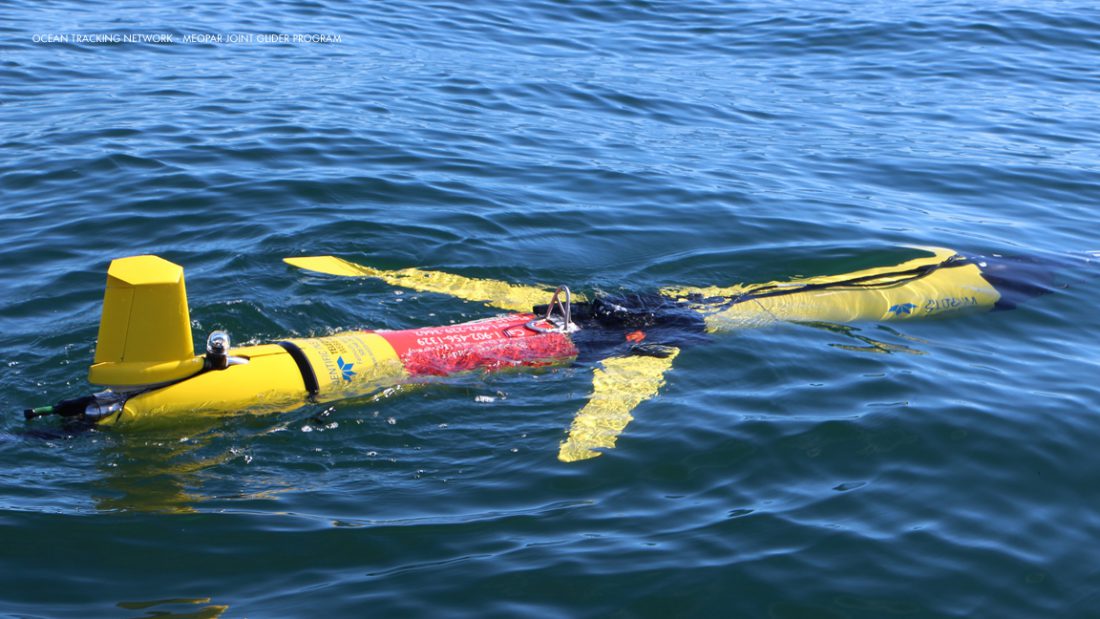“If we do not even know where wildlife is, how can we expect to manage activities on the ocean? How can we move away from being whales’ competitors in the natural world to being careful stewards? To assure their future, we need to be able to know where whales are now.”
Wondering Where the Whales Are
How do we protect and conserve a wildlife species when we don’t know where it is? How can we possibly change our behaviours to reduce our impacts and ensure the ongoing existence of species if we cannot say with certainty where they are? Simply put, we cannot. It is impossible to truly protect a whale species without knowing a great deal about its key needs and behaviours, as well as its main existential threats, so many of them caused by human activity. There is much work still to be done.
Whales, among them the largest animals in the world, are actually very difficult to locate.
Tracking terrestrial mammals like Canada’s caribou is hard enough given the vastness of our land and the mobility of the species. But that challenge would seem simple when compared to the overwhelming task of seeking out creatures that operate deep below an ocean’s surface at intractable depths, amid frigid temperatures and in impenetrable darkness. This vast “three-dimensional” search field contains multitudes of highly mobile whale species that operate anywhere from just below the surface to many kilometres deep in a mysterious world that encompasses about 70 per cent of the earth’s surface.
The challenge is so great that despite more than a century of research and scientific study (and a millennium give or take of hunting whales), the International Union for Conservation of Nature, responsible for the annual Red List of endangered species, estimated in 2017 that it is impossible to determine the status of 50 per cent of cetacean species in existence due to a lack of information! A good illustration of how little humans know about whales: in 2019, a new species (now known as Berardius minimus) was discovered off Japan. And in the Gulf of Mexico in 2021, Rice’s Whale, (Balaenoptera ricei) was discovered—and immediately declared Endangered.


Senior Conservation Biologist, Marine Programs
The search in Canadian waters is no less daunting
Living off Canada’s 244,000-kilometre coastline in some seven million square kilometres of ocean, are at least 30 different species of whales and dolphins. They can be found in the Pacific waters off British Columbia from Vancouver north to Alaska, in the North Atlantic from Nova Scotia to the Arctic Circle and in the expansive northern waters in and around Nunavut’s Arctic Archipelago as well as in the major inland seas of Hudson Bay, James Bay, the Strait of Georgia, and the Gulf of St. Lawrence.
Now, with these programs reaching their mandated termination, new funding streams must be developed. Important work needs funding to continue.

Old and New Ways of Looking for Whales
In the continuing quest for knowledge about whales and their behaviours — how many of them are there? where do they go? what do they eat? how do they find their food? — we need to develop better, more effective means of locating, tracking, and observing them.
This is the next crucial step.
As we’ve seen, despite their massive size, it is no easy task. It is challenging and it is expensive. There are two basic approaches to knowing where the whales are: observing and predicting. These two separate categories, comprising multiple strategies old and new, are only truly effective when deployed together. Indeed, given the magnitude of the challenge, the only possibility for success is to deploy all the different methods in conjunction with each other.
On Watch: From Binoculars to Satellites
“Thar she blows.” That was the traditional call when a lookout on a whaler spotted the spout of a whale. For thousands of years, the only way to spot a whale, was to float in a likely spot in the ocean and keep sharp lookout. It was all about luck. Visual spotting is still the primary way we look for whales, usually from a fast boat or plane, although there are also some shore-based visual surveys in areas known to have lots of whale traffic. With the right training and equipment, a professional observer can spot a whale among the waves when they come up for air and can identify species by subtle differences in their shape, markings, even the look of their spoutings. This method has the advantage of being able to record distinct markings (including scars from entanglements and ship-strikes), so that individual whales can be identified and followed. Recently infra-red cameras have been tested to see if their capacity to pick up different heat signatures will help see these creatures at the surface. Still, luck and happenstance are central to this method’s success: it is all about being in the right place at the right time.
Visual sightings may be a tried-and-true method, but it is far from ideal: Boats cost plenty to operate and cannot cover large areas; planes are even more expensive, have a larger carbon footprint and require specially trained crew. And besides, it is hard to see whales since they spend only a small proportion of their time at the surface—it is estimated Right Whales spend 20 per cent of their time at the surface, which is more than many other whale species. What’s more, making visual contact can be impossible in bad weather, a common Maritime condition as any seafarer will tell you.

The unavoidable reality is we “lose” whales all the time. The ocean is just gigantic. Even small pieces of it, areas like the Gulf of St. Lawrence, which is in fact a territorial sea, is too big to search thoroughly. There is no one device that suits and serves the entire focus. Rather what we need is a continual expansion of approaches and technologies so we can rely on a whole constellation of devices to detect and study whales in the wild. There is not one solution.
Senior Conservation Biologist, Marine Programs

Listen Up: Ships, Buoys and Gliders
Another means of detection and monitoring is to listen for them. Whales are acoustic animals which means they use sound to communicate with one another. While toothed whales will deploy noise as range-finding sonar as well as to share information, non-toothed whales “sing” as a means of communicating. With sensitive underwater microphones linked to advanced hardware running sophisticated programs, when researchers record whale sounds, often they can distinguish between species and thus identify which types of whales are nearby.
Acoustic technology has long been used from ships but the noise they make is disruptive and the vessels themselves a hazard for nearby whales. A longstanding method has been to distribute an array of stationary buoys fitted with hydrophones. These have been used with real success but are limited by being stuck in one location and by the need for multiple buoys to cover even a small area. More frequently now, hydrophones are being deployed aboard autonomous gliders, enabling scientists to go deep diving to where the whales actually live most of the time. Because they function autonomously, they are very quiet and can cover hundreds of kilometres over extended deployments; they also have huge advantages when compared to static buoy-based hydrophones and ship-borne versions. In addition to the hydrophones used to record the sound of nearby whales and the capacity to transmit real-time data, these underwater drones are often also equipped with instruments that can measure depth, salinity, water temperature and even what types of nutrients are present and available to whales in the water column. The information they gather can be invaluable when deciding on local conservation and anti-encounter measures.
Of course, listening for whales has its limitations as well. First among them researchers cannot tell from the recordings how many whales there are, what direction they are headed or what they are up to. And there is no way, unlike with visual spotting, to identify individual whales. And of course, this method only works if the whales make a noise. If they don’t vocalize, no one will know they are there.
Eyes in the Sky, Low and High
There have been some interesting technological innovations in the last decade, some of which are now entering mainstream applications. Flying drones, for instance, offer a tremendous opportunity for up-close inspection. These small yet robust unmanned aircraft cover wide tracts of the ocean taking many images, scanning for the presence of whales, gathering countless images for instantaneous computer analysis to tell researchers if it came across any whales. Drones are also being used to hover unobtrusively over whales, capturing precise measurements and doing a close assessment of health and body conditions. Specially designed versions are beginning to be deployed that have the ability hover above the blowhole to collect specimens from whales’ spoutings. This sampling offers a whole new level of insight into an individual whale’s diet, its state of health and its stress levels, all of which is invaluable information for whale conservationists. And it is completely unobtrusive. In Canada so far, these have been used on the West Coast to observe Orca and have begun to be deployed to help assess the Humpback Whale population in the Bay of Fundy.
Over the last several years, satellites have become part of the arsenal of the 21st century whale researcher too. In January 2021, the Canadian Space Agency announced with Fisheries and Oceans Canada and Transport Canada that it intends to start using some of Canada’s satellite capacity to monitor and protect endangered whales in the country’s waters. Called smartWhales, the $5.3-million three-year project will develop systems that allow satellites to detect the presence of Right Whales and to track and predict their movements. Among the projects currently underway is a system to provide up-to-the-minute location data and detect any proximity to potentially harmful vessels.




Prediction and Analysis
As important to whale conservation science as observation is, the more remote and arcane process of prediction based on analysis of known conditions is equally valuable. As we have seen, observing whales in the wild is no small task so any method that assists researchers is worth pursuing.
The approach is to develop predictive analyses based on the location of food sources and other whale-friendly conditions, often referred to as the prey-centric model. A good example is an academic study published in 2020 about Bowhead Whales in waters off Alaska. Attempting to identify the location of Bowhead Whale populations in the Beaufort Sea to determine where protective measures were most needed, the researchers modeled what would be the likely location, based on water temperature and water chemistry, depths, local currents and, importantly, the presence of zooplankton – an essential food source for Bowhead Whales. By estimating prey location this type of analysis can predict where whales will go. It was similar prey-centric modelling that helped researchers track Right Whales off Canada’s Atlantic coast. Warmer waters associated with global heating caused the Right Whale’s primary prey to gradually disappear from habitual feeding locations such as the Gulf of Maine and the Bay of Fundy and were found further north in the cooler waters of the Gulf of St. Lawrence.
With advances in artificial intelligence, predictive and statistical analyses are becoming more robust, more reliable. Drawing on real-world data from a multitude of global sources, high-powered computers using deep learning classification techniques (which can digest and learn from vast amounts of visual or acoustic data and provide predictive models) have the capacity to solve complex problems. They should prove to be an increasingly effective tool in the efforts to locate and conserve whale populations.
What We are Doing
Canadian Marine Animal Response Alliance
CMARA was developed in 2013 to unify and support the Canada’s regional marine response networks, to encourage the sharing of expertise and resources, and address critical gaps in the ongoing operation of the networks. CMARA is chaired and coordinated by the Canadian Wildlife Federation and is governed by representatives of each regional organization: Newfoundland and Labrador; Maritime provinces; Quebec, and British Columbia, as well as representative of Fisheries and Oceans Canada (DFO).

Why Does Canada Need a Marine Action Plan?
What YOU Can Do
Donate
Learn More About Our Coasts and Oceans
Become a Part of The Watch
- 0
- 1
- 2
- 3














